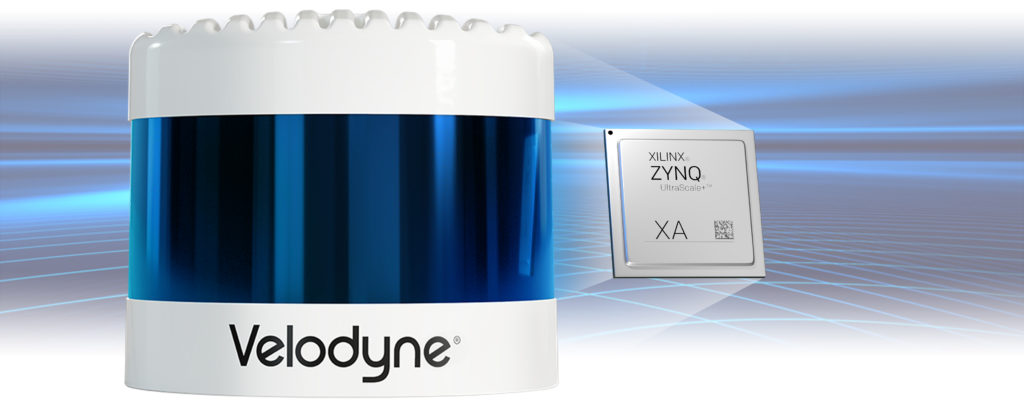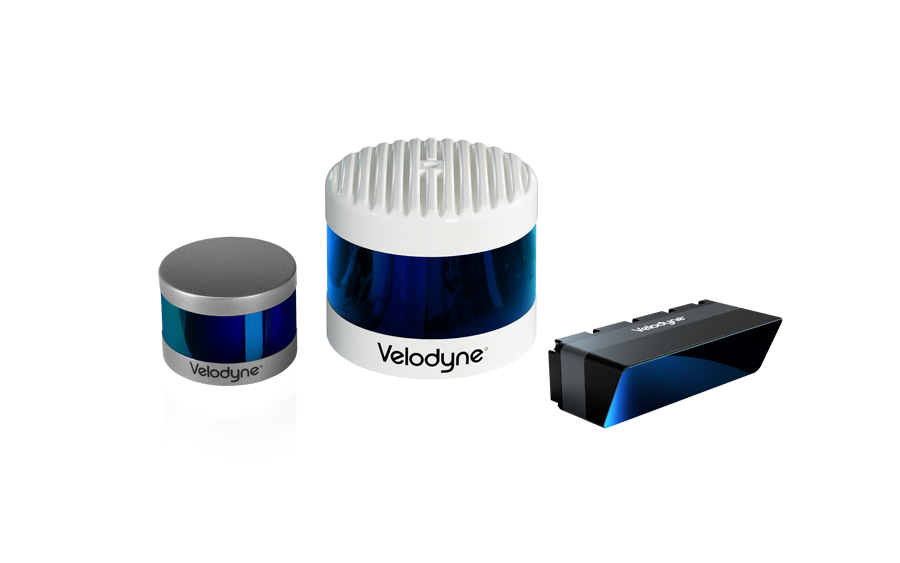
Autonomous vehicles (AV) and advanced driver assistance systems (ADAS) require the ability to sense and perceive what is happening around the vehicle in an extensive variety of driving conditions. Lidar sensors bring value to these applications by detecting pedestrians, cyclists, vehicles and more – in three dimensions and wide range of lighting conditions.
The Xilinx automotive-qualified device portfolio is deployed in a range of production-ready advanced sensing technologies including lidar and other sensors.
Xilinx field programmable gate arrays (FPGA) and adaptive system-on-chips (SoC) – integrated hardware circuits designed to be configured by a customer after manufacturing – are used in Velodyne’s lidar sensors for image processing. Xilinx technology allows for flexible programming while providing scalable and flexible processing performance for complex sensory data.
Xilinx is a leading automotive solution provider with over 20 years of automotive industry experience. They have shipped more than 205 million devices globally for automotive use, with 85 million used for production ADAS deployments. The company works with over 200 automotive companies, comprised of major Tier 1s, OEMs and startups globally.
We connected with Willard Tu, Senior Director, Automotive from Xilinx, to learn how Xilinx FPGA and SoC solutions are used in Velodyne’s lidar sensors and how their products address requirements for the automotive market.
A: Xilinx devices provide low-latency and high-throughput, capabilities which are a necessity in automotive-grade lidar. Their programmability is ideal for lidar projects as Xilinx technology can span from proof-of-concept to production-ready vehicles.
Our devices are not just programmable, they are powerful and flexible enough to deliver advanced capabilities needed for lidar sensors: signal processing, point cloud pre-processing and point cloud machine learning acceleration. They are also known for being efficient with power, which is a big advantage with automotive lidar.
A: Xilinx’s high-performance, highly scalable, programmable silicon offers distinct benefits for the extremely complex image processing requirements of Velodyne’s lidar sensor architecture.
Our multi-processor system-on-a-chip (MPSoC) devices, which we’re providing to Velodyne, combine CPU processing power with the flexibility of field-programmability, which means the devices can be reprogrammed as the design evolves. One device can be used for multiple “flavors” of Velodyne lidar, including future generations of product.
A: The programmability aspect of our silicon gives Velodyne a great deal of flexibility in creating custom capabilities for its products. The same Xilinx MPSoC can be used differently for different product models or customers. And it can be used for multiple generations of product without becoming obsolete. On top of this, our latest devices incorporate the latest artificial intelligence (AI) approaches. This enables Velodyne to integrate AI perception into its systems, resulting in “smart” lidar that can learn from surrounding objects.
A: We offer a wide range of products and work with our automotive customers to deliver the right performance-per-watt while integrating critical functional safety and security features.
Our automotive-grade devices comply with the “alphabet soup” that are the specs and certifications required by the automotive industry, all around the world. This includes ISO26262 ASIL-C level safety certification for our MPSoC product line.
A: We have been rolling out our next-generation technology, the adaptive compute acceleration platform (ACAP)—which exceeds traditional CPUs and GPUs in performance. It is enabling dramatic acceleration for applications such as image processing and AI inferencing. On top of this, we unveiled the Vitis unified software platform to help make Xilinx devices easier to program and more accessible to software developers. We’re trying to make it easier for our automotive clients to innovate and differentiate.
Our programmable platforms enable automotive electronics developers to spend less time on the infrastructure of applications and more time creating value with designs that ultimately enhance the user experience of next-generation infotainment, drive- assistance and driver-information systems. We do the heavy lifting so our customers don’t have to.

Velodyne Lidar (Nasdaq: VLDR, VLDRW) ushered in a new era of autonomous technology with the invention of real-time surround view lidar sensors. Velodyne, a global leader in lidar, is known for its broad portfolio of breakthrough lidar technologies. Velodyne’s revolutionary sensor and software solutions provide flexibility, quality and performance to meet the needs of a wide range of industries, including robotics, industrial, intelligent infrastructure, autonomous vehicles and advanced driver assistance systems (ADAS). Through continuous innovation, Velodyne strives to transform lives and communities by advancing safer mobility for all.